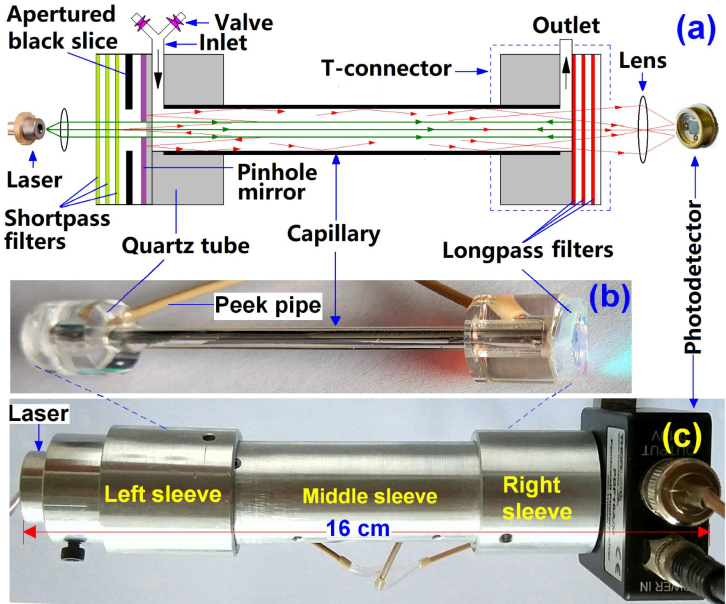Date:Jan 8, 2021
Recently, Prof. Huang Hui’s team has invented a new type oflaser-induced fluorescence (LIF), namely “Pinhole Metal Capillary LIF (PMC-LIF)”, in which “pinhole” can avoid the contact and scattering of the laser beam with thesidewallof capillary, and “metal capillary” can avoid laser leakage, thus the backgroundsignal and relatednoisecan be suppressed utmostly. This work entitled A compact, low-cost and high sensitive LIF based on pinhole metal-capillary and direct laser-diode excitation was published in Optics and Lasers in Engineering (JCR Q1, IF4.27).

For LIF, the SNR and related concentration detectability was severely limited by background signal (noise). Herein, an axial-excitation LIF based on pinhole metal-capillary (PMC) and direct laser-diode excitation was proposed. An overall ~480 fold improvement on SNR was realized, because the laser-sidewall interaction (LSI) and related background signal (noise) can be effectively suppressed in PMC by avoidance of laser leakage and laser contact with capillary sidewall. For rhodamine B detection without sample enrichment, a detection limit of concentration (DLC) of 0.4 pM was obtained, which is 2.5 fold lower than the DLC (1 pM) of commercial LIFs equipped with bulky and expensive Ar+laser. For selective detection of Cu2+, a DLC of 5 pM was realized, which is more than 40 fold lower than that of previous fluorimetry detection with similar quantum-dot probe. The PMC-LIF features compact (16 × 4 × 4 cm3), low-cost and high concentration detectability.
Prof. Huang Hui from Faculty of Electronic Information and Electrical Engineering, Dalian University of Technology, has long been devoted to the research ofphotodetectionand micro/nano sensors, and has published more than forty academic papers in famous journals(e.g.,nano.lett.)as the first author or corresponding author.
Link to the paper: